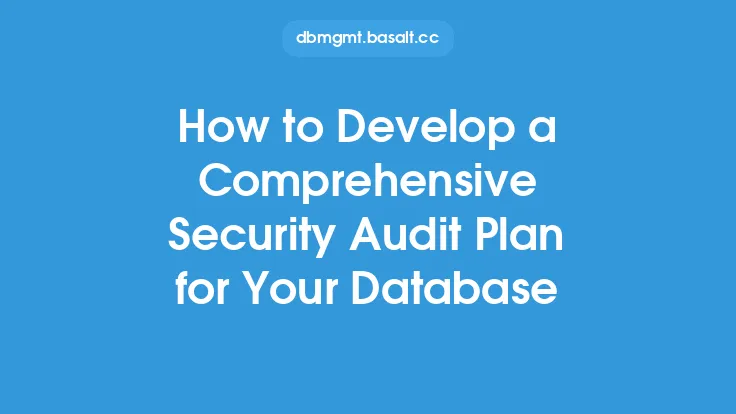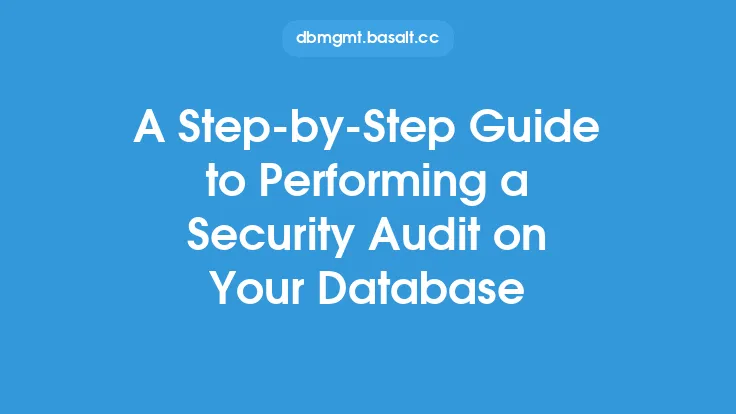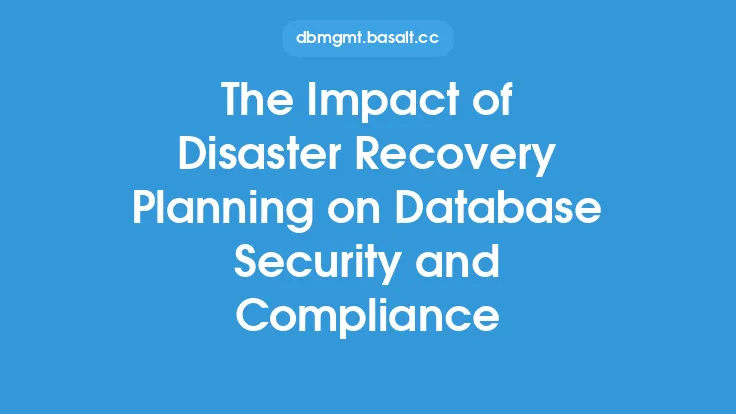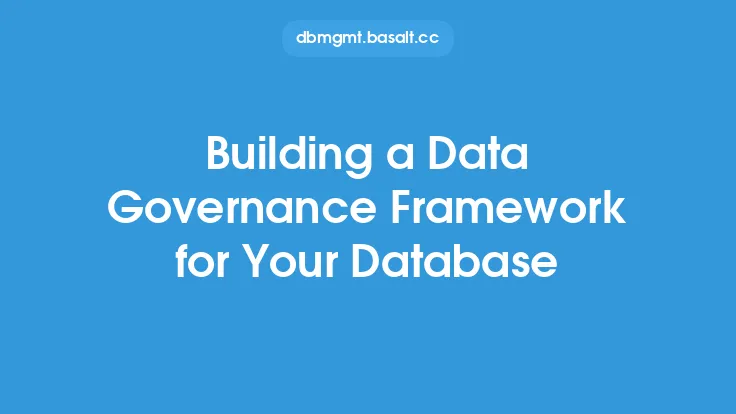Building a robust database security strategy is crucial for organizations to protect their sensitive data and ensure compliance with regulatory requirements. A compliance-focused database security strategy involves a multi-faceted approach that encompasses various aspects, including data encryption, access control, auditing, and monitoring. In this article, we will delve into the key components of a compliance-focused database security strategy and provide guidance on how to implement it.
Introduction to Database Security
Database security is a critical aspect of database administration, and it involves protecting the database from unauthorized access, use, disclosure, disruption, modification, or destruction. A compliance-focused database security strategy is designed to ensure that the database is secure and compliant with relevant regulatory requirements, such as the General Data Protection Regulation (GDPR), the Health Insurance Portability and Accountability Act (HIPAA), and the Payment Card Industry Data Security Standard (PCI DSS). To develop a compliance-focused database security strategy, organizations must first understand the regulatory requirements that apply to their industry and the type of data they store.
Assessing Database Security Risks
Assessing database security risks is a critical step in developing a compliance-focused database security strategy. This involves identifying potential vulnerabilities and threats to the database, such as SQL injection attacks, cross-site scripting (XSS) attacks, and unauthorized access. Organizations must also assess the likelihood and potential impact of these threats and prioritize their mitigation efforts accordingly. A thorough risk assessment should include a review of the database configuration, user access controls, data encryption, and auditing and logging mechanisms.
Implementing Data Encryption
Data encryption is a critical component of a compliance-focused database security strategy. It involves converting plaintext data into unreadable ciphertext to protect it from unauthorized access. Organizations must implement data encryption for both data at rest and data in transit. Data at rest encryption involves encrypting data stored in the database, while data in transit encryption involves encrypting data transmitted between the database and applications or users. Common data encryption algorithms include Advanced Encryption Standard (AES) and Transport Layer Security (TLS).
Access Control and Authentication
Access control and authentication are essential components of a compliance-focused database security strategy. Access control involves granting or denying access to the database based on user identity, role, or permissions. Organizations must implement a least privilege access model, where users are granted only the necessary privileges to perform their tasks. Authentication involves verifying the identity of users or applications before granting access to the database. Common authentication mechanisms include username and password, multi-factor authentication, and Kerberos authentication.
Auditing and Logging
Auditing and logging are critical components of a compliance-focused database security strategy. Auditing involves tracking and monitoring database activities, such as user logins, queries, and data modifications. Logging involves recording database events, such as errors, warnings, and information messages. Organizations must implement auditing and logging mechanisms to detect and respond to security incidents, as well as to demonstrate compliance with regulatory requirements. Common auditing and logging tools include database management system (DBMS) logs, security information and event management (SIEM) systems, and audit trails.
Monitoring and Incident Response
Monitoring and incident response are essential components of a compliance-focused database security strategy. Monitoring involves continuously tracking database performance, security, and compliance metrics to detect potential security incidents. Incident response involves responding to and managing security incidents, such as data breaches or unauthorized access. Organizations must develop an incident response plan that outlines procedures for responding to security incidents, including notification, containment, eradication, recovery, and post-incident activities.
Compliance Frameworks and Standards
Compliance frameworks and standards provide guidance on implementing a compliance-focused database security strategy. Common compliance frameworks and standards include the National Institute of Standards and Technology (NIST) Cybersecurity Framework, the International Organization for Standardization (ISO) 27001 standard, and the PCI DSS standard. These frameworks and standards provide guidelines on implementing security controls, such as data encryption, access control, and auditing, to protect sensitive data and ensure compliance with regulatory requirements.
Best Practices for Implementation
Implementing a compliance-focused database security strategy requires careful planning, execution, and ongoing maintenance. Best practices for implementation include:
- Conducting regular risk assessments and vulnerability scans
- Implementing a least privilege access model
- Encrypting data at rest and in transit
- Monitoring database performance and security metrics
- Developing an incident response plan
- Providing ongoing training and awareness programs for database administrators and users
- Continuously reviewing and updating the database security strategy to ensure compliance with evolving regulatory requirements.
Conclusion
Building a compliance-focused database security strategy is a critical aspect of database administration. It involves assessing database security risks, implementing data encryption, access control, and auditing, and monitoring and responding to security incidents. By following best practices and compliance frameworks and standards, organizations can ensure the security and compliance of their databases and protect sensitive data from unauthorized access or disclosure. A compliance-focused database security strategy is an ongoing process that requires continuous review, update, and maintenance to ensure the security and compliance of the database.





